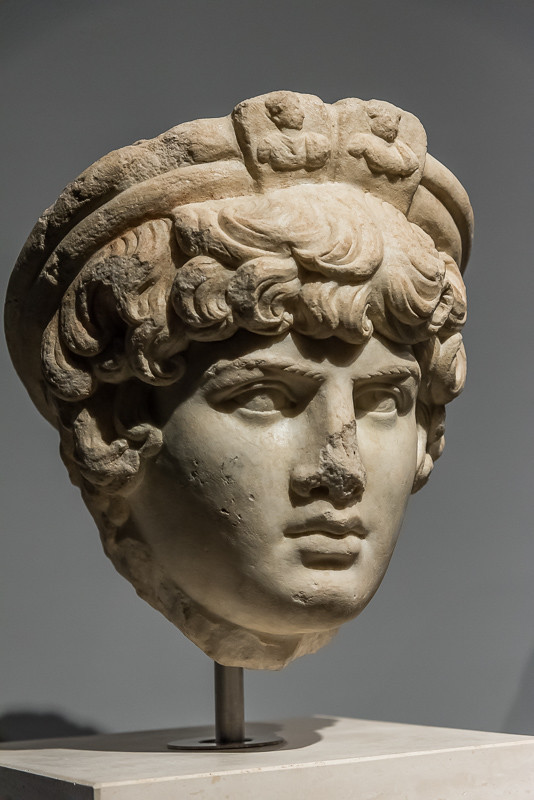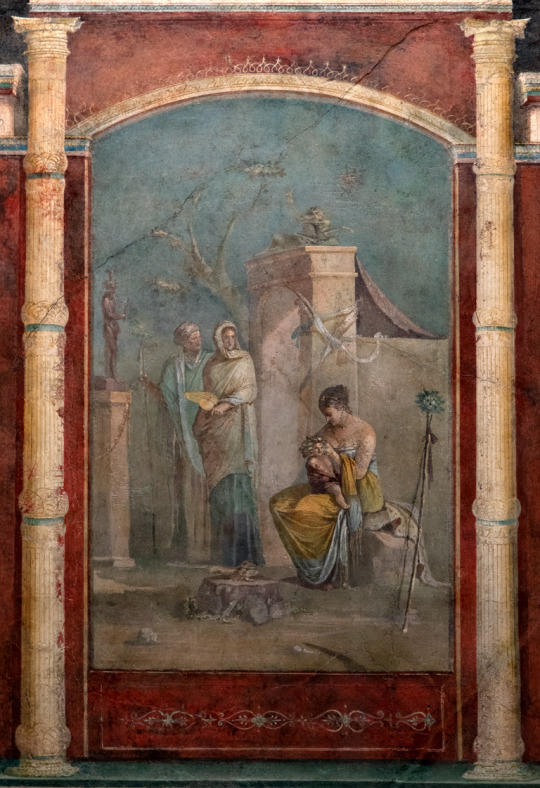#palazzo massimo alle terme
Explore tagged Tumblr posts
Text

~130-138, (Auctor incertus), Ritratto di Antinoo (Palazzo Massimo)






#Auctor incertus#Effigies Antinoi#saec. II#130#138#sculptura#Museo Nazionale Romano#Palazzo Massimo alle Terme#Romae#Antinous#CK5U42G
11 notes
·
View notes
Text

Mosaic floor from the Baths of Diocletian (3rd century) Museum of the Palazzo Massimo alle Terme, Rome.
1K notes
·
View notes
Text


~ Childhood of Dionysos: From the cubiculum B of the villa Farnesina (Dionysos with the nymphs of Mt. Nysa, to whom Zeus has entrusted the care of his baby-son).
Date: 1st century B.C.-A.D. 1st century
Provinience: Roman National Museum, Palazzo Massimo alle Terme (Roma, Museo nazionale romano, Palazzo Massimo alle Terme).
#ancient#ancient art#history#museum#archeology#Roman#childhood of Dyonisos#villa farnesina#zeus#1st century B.C.#a.d. 1st century
777 notes
·
View notes
Text

The 'Doidalses Aphrodite' or Bathing Venus
Photo by Federico Pestilli
Crouching Venus, Hadrianic copy of Greek original by Doidalsas, once situated at the Heliocaminus Baths at Villa Adriana, Tivoli, Palazzo Massimo alle Terme, Rome.
Doidalsas or Doidalses was a sculptor from Bithynia active in mid-3rd c. BC and created the votive bronze statue of Bathing Aphrodite, which made him famous (commissioned by the king of Bithynia Nicomedes I (279-255 BC), because he could not acquire Aphrodite of Knidos)
https://www.federicopestilli.com/
https://followinghadrian.com/2014/03/12/art-and-sculptures-from-hadrians-villa-marble-statue-of-a-crouching-venus/
https://www.art-prints-on-demand.com/a/anonymous-painter/the-doidalses-aphrodite-o.html
#Venus#Crouching Venus#photography#portrait#marble#Federico Pestilli#detail#entropy#bath#Doidalsas#iconic
20 notes
·
View notes
Text

Unknown Artist
Statue of Thetis with a triton, Roman copy from a Greek original of the 2nd century BC, Thasian marble. A recent reconstruction identifies the statue as a part of the sculptural group by Skopas of Thetis giving her son Achilles new weapons described by Pliny. According to this theory, the statue known as “Ludovisi Ares” would actually represent Achilles. (x)
Palazzo Massimo alle Terme, Rome
16 notes
·
View notes
Text
Death of a Charioteer
Martial, Epigrams X.53
I am the famous Scorpus, glory of the shout-filled Circus, Source of your clapping, Rome, and your brief delight; Envious Lachesis snatched me away at twenty-seven-- Counting my victories, she thought me elderly.
Ille ego sum Scorpus, clamosi gloria Circi, Plausus, Roma, tui deliciaeque breves, Invida quem Lachesis raptum trieteride nona, Dum numerat palmas, credidit esse senem.

Mosaic depicting a charioteer of the albata (White) faction, one of the four factions that dominated Roman chariot racing, with his horse. Artist unknown; 1st half of 3rd cent. CE. From the Villa dei Severi, Baccano; now in the Palazzo Massimo alle Terme, Rome.
#classics#tagamemnon#Latin#Latin language#lingua latina#translation#Latin translation#poetry#poetry in translation#Roman poetry#Ancient Rome#Roman Empire#Martial#epigram#elegiac couplets#ancient athletics#chariot racing
88 notes
·
View notes
Text

Fresco depicting an erotic scene, from the cubiculum D of the villa della Farnesina 1st century AD Palazzo Massimo alle Terme, Rome
11 notes
·
View notes
Text

Wall fresco painting From the subterranean hall of the Villa of Livia at Prima Porta. 40—20 BCE. Rome, Roman National Museum, Palazzo Massimo alle Terme
26 notes
·
View notes
Text

Roma. Palazzo Massimo alle Terme
10 notes
·
View notes
Text

Boxer at Rest / Seated Boxer / Terme Boxer, 330 to 50 BCE. Greek bronze with copper inlays, 140 × 64 × 115 cm. Εxcavated in Herculaneum (Rome) in 1885, collection of the Palazzo Massimo alle Terme, National Museum of Rome.
3 notes
·
View notes
Photo

Portonaccio 'Battle Sarcophagus', ca. AD 180-190,
Image: Palazzo Massimo alle Terme, Rome,
Photography: Jean-Pol Grandmot
#art#design#sculpture#sarcophagus#portonaccio#battle#palazzo massimo alle terne#style#history#jean-pol grandmot
45 notes
·
View notes
Text
Tiber Apollo, Palazzo Massimo alle Terme, Rome
https://en.wikipedia.org/wiki/Tiber_Apollo

I segni del tempo ©Tiziana Loiacono
159 notes
·
View notes
Text





Frescoes from the Villa della Farnesina (1st century BC) From the House of Marcus Agrippa and Julia, daughter of Augustus
Palazzo Massimo alle Terme, National Museum, Rome, Italy.
1K notes
·
View notes
Text
Le pugiliste ou boxeur des Thermes, sculpture grecque en bronze à la cire perdue (seconde moitié du IVe siècle av. J.-C.). Trouvée enterr��e sur les pentes du mont Quirinal à Rome en 1885, elle ornait probablement les thermes de Constantin pendant l'Antiquité.
Palazzo Massimo alle terme.




0 notes
Text

Head of Medusa
Period: Reign of Caligula (A. D. 37-41).
Provinience: , Roman National Museum, Palazzo Massimo alle Terme (Roma, Museo nazionale romano, Palazzo Massimo alle Terme).
Medium: Brass X
0 notes
Photo

Hermaphrodite
Sleeping Hermaphrodite, Roman, Imperial Period, 1st century BC, marble
Palazzo Massimo alle Terme, Soprintendenza Speciale per i Beni Archeologici di Roma, Su concessione del Ministero per i Beni e le Attivitá Culturali (Source: Museum of Fine Arts, Boston)
21 notes
·
View notes